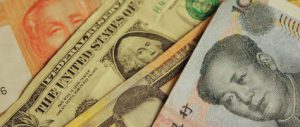The western alphabet has been much discussed in recent months in relation to the shape of the eventual economic recovery. Some see a “U” shape, others a “V”, “W” or even “L” shaped recovery—or lack of it. But as the huge government stimulus packages begin to have an impact, there is also growing interest in how “green” they are—that is, how much they either simply serve to prop up old, geriatric industries like Detroit’s auto-makers, or spur investment in new technologies, business models and economic clusters. And there is growing interest in how we might now plan for—and achieve—this “green” recovery.
This was a question we looked at in our report The Phoenix Economy, published earlier in 2009. Our conclusion was that the economic downturn would last longer—and be more drawn-out—than most people thought. A rapid recovery might seem to undermine that conclusion, but waiting in the wings after the credit crunch are the energy crunch and climate crunch.So how green are the stimulus packages announced to date?
In an updated report on government stimulus packages, the British bank HSBC has just concluded that most of the major countries are still just in the planning phase, with only a small fraction of the money promised by politicians so far being released to invest in wind farms and other green ventures.
Of nearly US$480 billion HSBC has identified in green fiscal programs announced in some 20 countries it tracks around the world, the bank estimates that just 3%, or around US$14 billion, had been spent on green ventures by the end of the first half of 2009. “Considerable time can elapse between the announcement of high level spending programmes and actual disbursement,” as HSBC commented.
The United States, HSBC noted, had spent just US$355 million out of a total of US$64 billion committed to energy efficiency, renewable power and other green investments. Whatever environmental and cleantech entrepreneurs may hope, many of the programmes that have been announced in the US, China and other countries are likely to be implemented in 2010 and 2011.
That is the bad news, but there is some better news, too. While they may be slow on the implementation front, governments are promising more money on green investments. Since the bank’s last report in May, HSBC found that the total amount of money being spent on energy efficiency and other programs had increased to US$512 billion by the end of July—up from US$478 billion in the countries it tracks.
Green spending represents about 16% of the $3.1 trillion in total fiscal spending governments have committed to, which some may see as too little, too late, but optimists point to the potential impact of the “multiplier effect.” Given that government spending and pledges can free up private-sector spending, which in turn could match government spending, the overall economic impact could be even greater than the basic numbers might suggest. HSBC calculates that around US$546 billion in private spending will be delivered on top of the currently known green spending plans from governments, suggesting a total global stimulus of more than US$1 trillion.
As a result, we are seeing management thinking shifting. In his new book Green Recovery: Get Lean, Get Smart, and Emerge from the Downturn on Top, Andrew Winston sketches out a blueprint for a very different recovery than most people are currently looking forward to.
Among the challenging questions he raised: how much money – and how many jobs – could your business save if you reduced energy use and waste by 25%? How would your business be impacted if oil reached US$300 per barrel? He admits that these might seem like odd questions to ask in the midst of a global recession–“but they’re not”. He concludes: “Companies that shelve their green strategies until the economy improves will miss a huge opportunity to make their businesses stronger and more profitable.”
Perhaps surprisingly, Winston argues, “environmental challenges and increasing ‘green’ awareness have not weakened in the wake of the financial crisis. Business leaders must face both problems simultaneously. Fortunately, some of the same strategies that address environmental issues can help companies survive today’s economic conditions—and prosper when the good times return.”
At the level of a given business, Winston argues, “going green is essentially about doing more with less. Viewed through this lens, green initiatives transform from costly luxuries to powerful recession-fighting, profit-making tools”. He proposes four key steps for business leaders—and leading businesses. First, he says, “Get lean: generate immediate bottom-line savings by reducing energy use and waste.” Second, “Get smart: use value-chain data to cut costs, reduce risks, and focus innovation efforts.” Third, “Get creative: pose heretical questions that force you to find solutions to tomorrow’s challenges today.” Fourth, “Get engaged: give employees ownership of environmental goals and the tools to act on them.”
The key is to use the opportunity of the downturn “to focus and reinvigorate the core.” Having worked over many years in Japan, it strikes me that this is something that Japanese business used to be very good at—investing into a recession, to get positioned for the eventual upturn. Winston does not argue that green initiatives will always be successful, let alone profitable. But, he says, two essential paths in green business—using fewer resources and helping customers lower their environmental impacts—increase the total long-term value of the enterprise.
Whether or not you are likely to attract stimulus funding from one or more governments, thinking green is a way both to ride out the rough times but also to come out of the downturn ahead of your competitors. While companies with a weak commitment to sustainability have been cutting back, this is the time to “get leaner, smarter, more creative, and more engaged” survive, stay relevant and build solid foundations for future market success.
John Elkington is co-founder of SustainAbility (https://www.sustainability.com) and of Volans (https://www.volans.com). His personal website is at: https://www.johnelkington.com
Homepage image: Researchers at Lawrence Berkeley National Laboratory, California, study how plant-growth allocation affects the amount of carbon that is stored in soil. Photograph by Roy Kaltschmidt.



